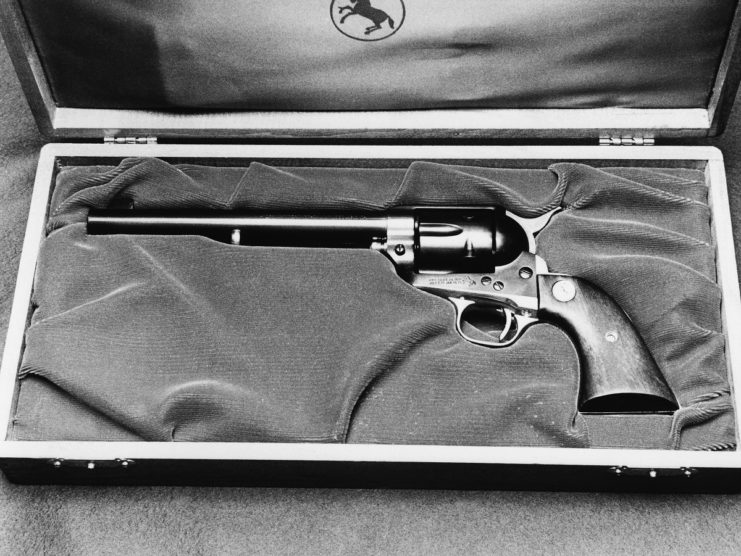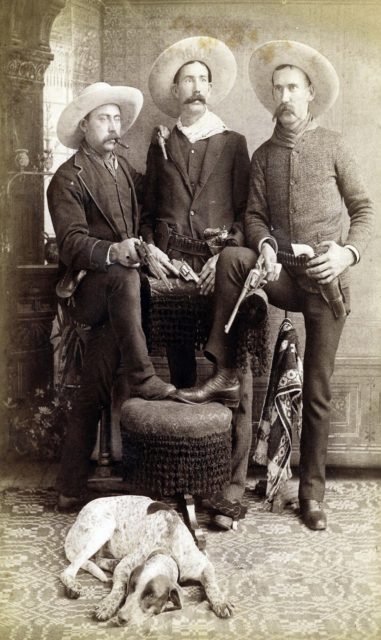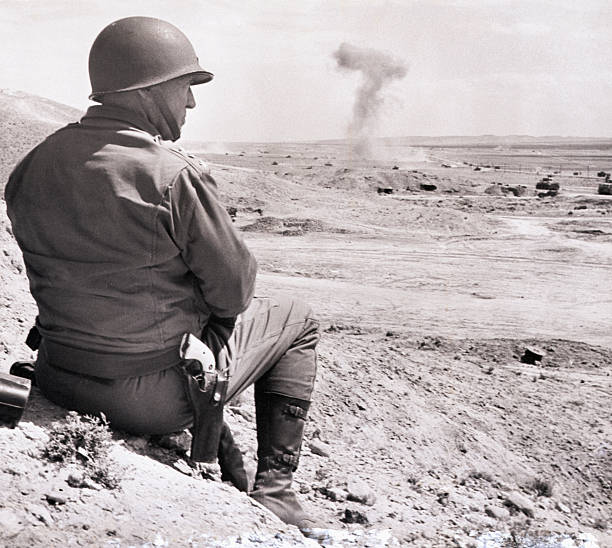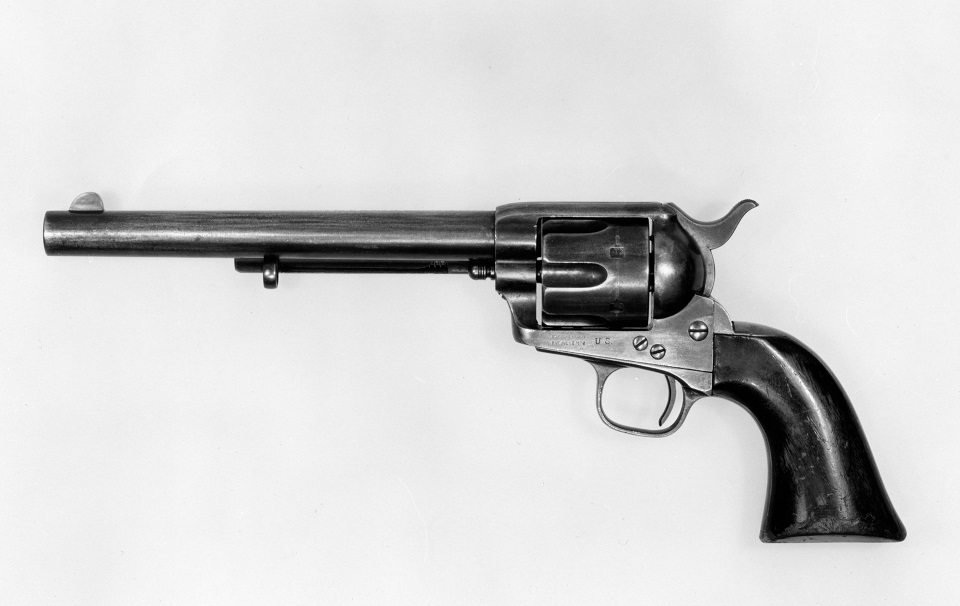The Colt Single Action Army, also known as the Peacemaker, was a handgun that has been seen everywhere from the gunfight at O.K. Corral to General George S. Patton’s hip. It is an American icon, a symbol of the Wild West and the outlaws and lawmen that used it. Originally designed for the US Government, this six-shot revolver quickly became a firearm legend, one of the most well-known handguns ever made.
The weapon has mostly remained in production since it was introduced in 1872, with Colt only stopping production on a couple of occasions. Even today, Colt still makes this awesome handgun.
Design

Throughout the 1800s, before the Peacemaker was even thought of, Colt’s Patent Firearms Manufacturing Company had already released a number of revolvers. These included the Colt Paterson, 1851 Navy, and Army Model 1860. Although Samuel Colt died in the early 1860s, his company made a fortune supplying the Union Army with these weapons during the Civil War.
However, all of these guns were cap and ball revolvers, which required the user to individually load each chamber with a projectile, gun powder, and a percussion cap (which ignited the powder). This method of loading was dependable, but slow, and could be disrupted by strong winds or completely ruined by rain. Not to mention that handloading increases the chances of user error, leading to accidents.
There were some steps to improve this system, like using paper cartridges, but before long the self-contained metallic cartridge eliminated these issues. First appearing in the mid-1860s, the US Army was soon interested in this revolutionary new ammunition.
Colt started work on a pistol that used self-contained cartridges, but in 1870 the Army reviewed the gun and noted that it was too fragile and its .44 rimfire round lacked stopping power. They went back to the drawing board and improved on this design, strengthening the frame and increasing its caliber to .45.
The Colt Single Action Army was born.
The Peacemaker

This new weapon had a six-shot cylinder and a single action trigger, which meant it needed to be manually cocked between each shot. Its cylinder was loaded via a loading gate on the right side of the gun. To load the Peacemaker, the hammer is half-cocked, the loading gate is opened and then the rounds are simply dropped into the chambers.
Removing spent casings worked similarly, just in reverse. With the loading gate open, the user would align the correct chamber with the loading gate and push the casing out with the ejector rod located under the barrel.
Reloading the Peacemaker was quite slow, but it was still much faster than cap and ball guns. It also made the gun reliable and durable.
The Peacemaker did not come with an included safety, much like many firearms from the era – something that is completely unheard of today. This meant the gun was susceptible to accidental discharges, whether that’s caused by user error or the weapon being bumped or dropped. Many users made their own ad-hoc safety system by keeping one of the six chambers empty. This chamber would then be aligned with the hammer, and the hammer would be dropped. This would ensure even if the gun attempted to fire, there was no round in the chamber.
The US Army was pleased with the design and made an order for 8,000 (although this would increase to 30,00 over the next few decades) for a cost of $13 each. With its good stopping power, cheap price, reliability, and ease of use, the Peacemaker was an ideal weapon for servicemembers.
The weapon was used extensively in the American Wild West and was often taken as war trophies by Native Americans.
Perhaps its most famous military use was on the hip of General Patton, who had a Colt Single Action Army customized with ivory grips. This weapon was his daily carry and was a close companion.

Since its creation over 450,000 Peacemakers have been built, many featuring different barrel lengths and calibers. It was eventually superseded by the double-action .38-caliber Colt Model 1892, which was faster to fire and reload, but it lacked the Peacemaker’s stopping power. As a result, the Army brought the Peacemaker back.
